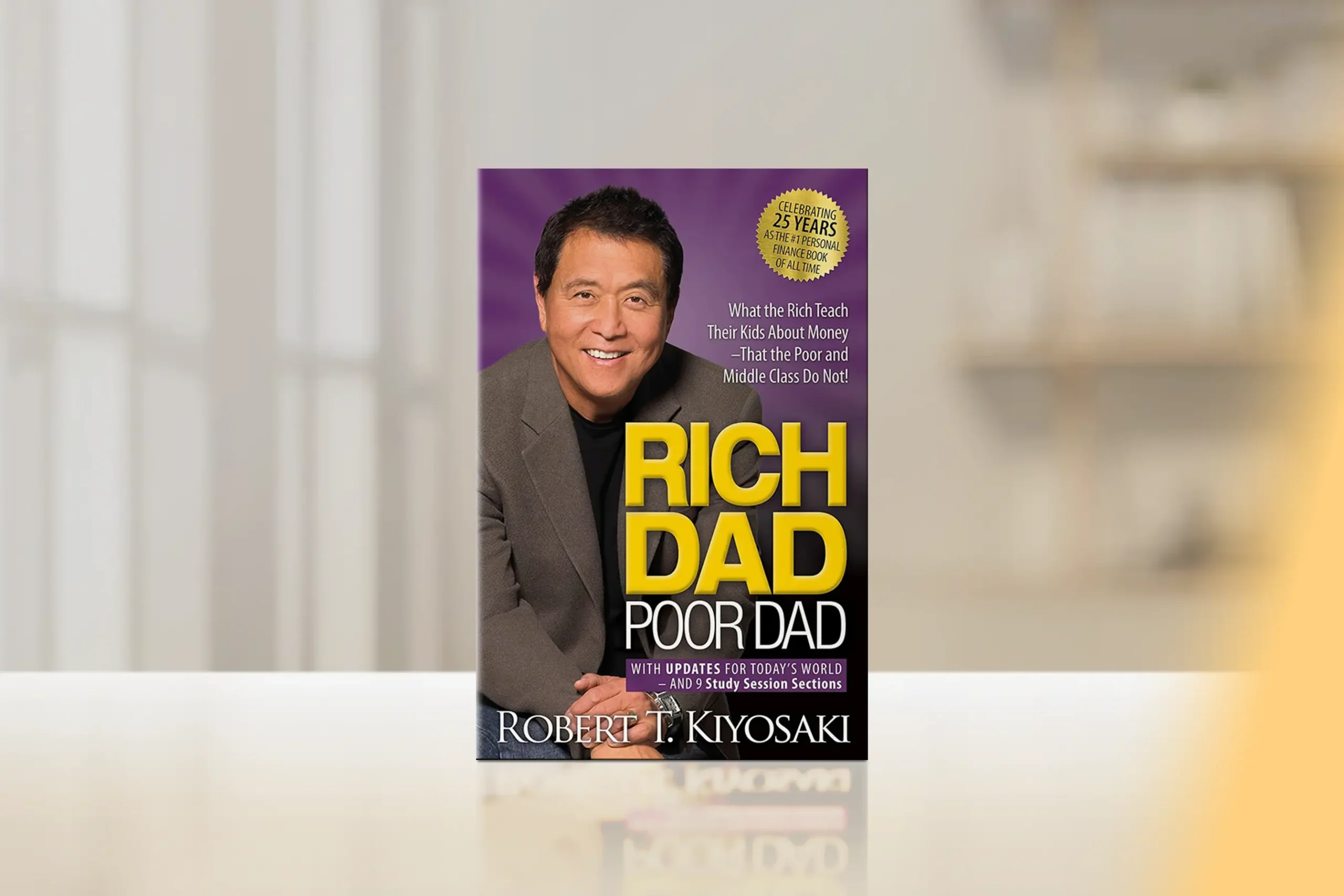Robert T. Kiyosaki’s “Rich Dad Poor Dad” has become a cornerstone in personal finance literature since its publication in 1997. This thought-provoking book challenges conventional wisdom about money and investing, offering readers a fresh perspective on achieving financial independence. By contrasting the financial philosophies of his highly educated but fiscally struggling father (Poor Dad) with those of his best friend’s entrepreneurial father (Rich Dad), Kiyosaki presents a compelling narrative that has inspired millions to rethink their approach to money and wealth-building.
Core Concepts
“Rich Dad Poor Dad” revolves around several key principles that form the foundation of Kiyosaki’s financial philosophy:
- The rich don’t work for money; they make money work for them
- Financial literacy is crucial for building wealth
- Understand the difference between assets and liabilities
- Focus on acquiring income-generating assets
- Develop financial intelligence through real-world experience
These concepts aim to shift readers’ mindsets from traditional employee thinking to that of an investor and entrepreneur, empowering them to take control of their financial futures.
Chapter-by-Chapter Review
Chapter 1: The Rich Don’t Work for Money
Kiyosaki introduces the contrasting views of his two father figures, setting the stage for the book’s central theme. He emphasizes the importance of financial education and breaking free from the rat race.
Chapter 2: Why Teach Financial Literacy?
This chapter underscores the critical need for financial education, arguing that traditional schooling often falls short in preparing individuals for real-world financial challenges.
Chapter 3: Mind Your Own Business
Kiyosaki distinguishes between your profession and your business, encouraging readers to focus on building and acquiring assets outside of their day jobs.
Chapter 4: The History of Taxes and the Power of Corporations
Here, the author delves into how the wealthy use corporate structures and tax laws to their advantage, providing insights into legal strategies for reducing tax burdens.
Chapter 5: The Rich Invent Money
This chapter explores the concept of financial intelligence and how the wealthy create opportunities rather than waiting for them, emphasizing creativity in investing.
Chapter 6: Work to Learn—Don’t Work for Money
Kiyosaki advocates for seeking jobs and experiences that build skills and knowledge, rather than solely focusing on the paycheck.
Key Strengths
- Challenges conventional thinking about money and wealth
- Provides a clear, accessible introduction to financial concepts
- Uses storytelling effectively to illustrate complex ideas
- Emphasizes the importance of financial education and self-reliance
- Encourages readers to take action and control of their financial lives
Potential Drawbacks
Potential Drawbacks:
- Some critics argue that certain anecdotes and advice are oversimplified
- The book’s emphasis on real estate and entrepreneurship may not resonate with all readers
- Some financial strategies suggested may be riskier than traditional approaches
Who This Book Is For
“Rich Dad Poor Dad” is an eye-opening read for a wide range of individuals seeking to improve their financial literacy and mindset. It’s particularly valuable for:
- Young adults starting their financial journey
- Employees looking to break free from the traditional career path
- Aspiring entrepreneurs and investors
- Anyone feeling stuck in the “rat race” and seeking financial independence
Final Review
“Rich Dad Poor Dad” is a paradigm-shifting book that has the power to transform your relationship with money. Kiyosaki’s straightforward approach and compelling narrative make complex financial concepts accessible to readers of all backgrounds. By challenging conventional wisdom and providing alternative perspectives on wealth-building, the book empowers you to take control of your financial future.
While some of Kiyosaki’s ideas may seem unconventional or even controversial, they serve as a valuable starting point for developing financial intelligence. The book’s true strength lies in its ability to inspire readers to think differently about money and take proactive steps towards financial freedom.
Rating: 4.5/5
An essential read for anyone looking to break free from traditional financial thinking and embark on a journey towards long-term wealth and financial independence.

Alternative Books
If you found “Rich Dad Poor Dad” insightful, consider exploring these related books that offer complementary perspectives on personal finance and wealth-building:

The Total Money Makeover by Dave Ramsey
Provides a step-by-step guide to getting out of debt and building wealth.
Rating: 4.7/5

The Intelligent Investor by Benjamin Graham
Offers a more traditional approach to value investing and long-term wealth creation.
Rating: 4.6/5

Think and Grow Rich by Napoleon Hill
Explores the psychological aspects of wealth creation and success.
Rating: 4.7/5





